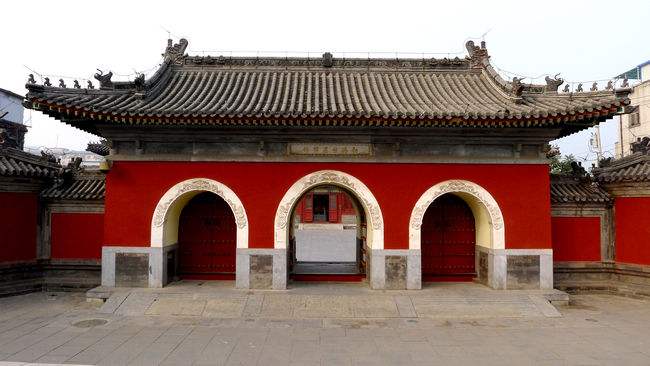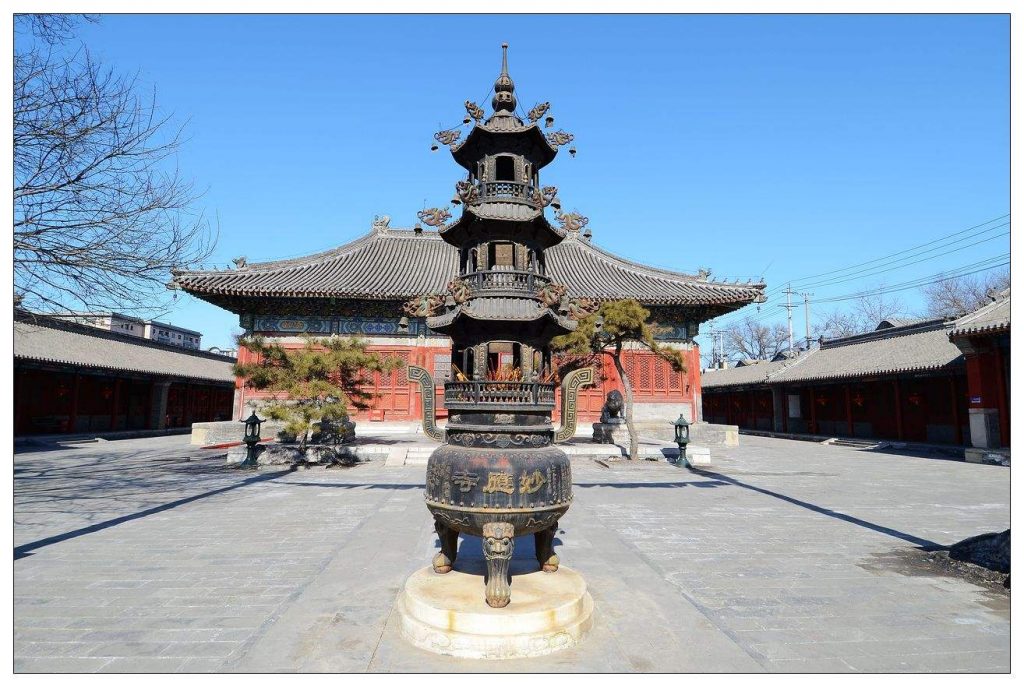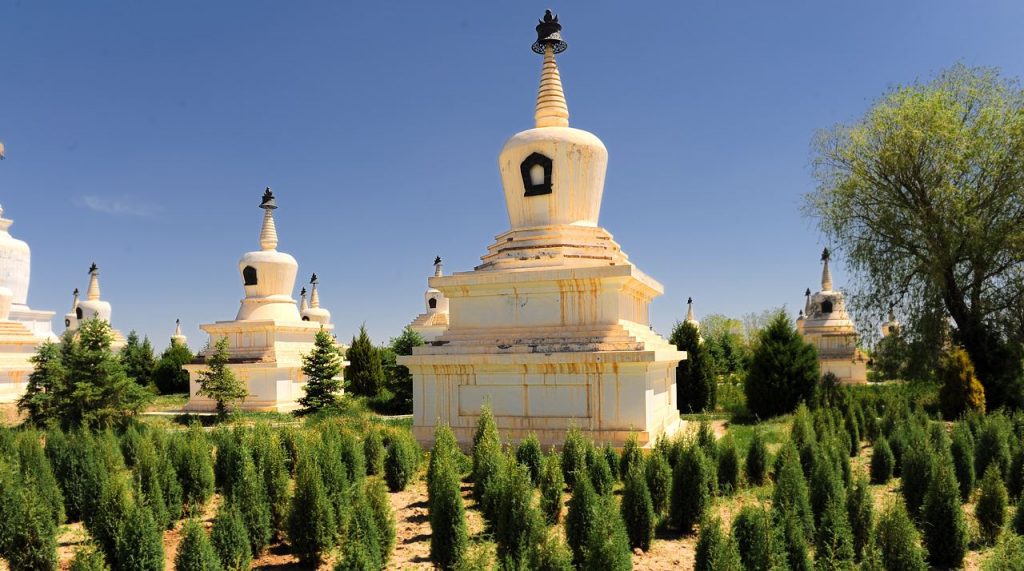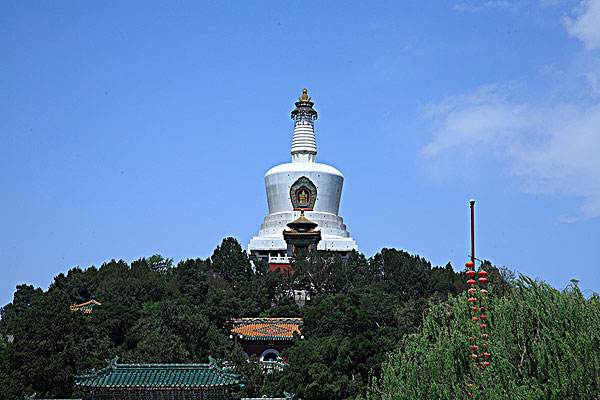Miaoying Temple White Dagoba
4 min readMiaoying Temple White Dagoba is the earliest and largest pagoda of Tibetan style extant in China. It is also an important symbol and a witness of the cultural exchange between China and foreign countries preserved in Beijing from the Yuan According to the historic records, White Dagoba was initially built inside Yong’ an Temple(Temple of Eternal Safety) in the Liao dynasty. There used to betwenty grains of sarira in original dagoba. These magic sarira gave off bright lights during the night. In the beginning, people lived nearby thought that there might be a fire breaking out and rushed towards the dagoba with buckets in hands. However, there was no smoke at all. Not until then did they realize that it was the sarira shining in it.

Therefore, people began to prostrate the pagoda ever since. Unfortunately, this white dagoba was destroyed in the wars. In the Yuan dynasty, Kublai Khan, the first emperor of the Yuan dynasty, decided to rebuild the white dagoba on the basis of the original one to pray for the longevity of its ruling.A famous Nepal craftsman, Acraniko, was invited to be in charge of the construction. Leading 85 other craftsmen, he finished the building of the dagoba after eight years of hard work.

This pure white jade-like dagoba stood high and erect and pointed towards the vault full of vigor and power. It was the tallest building in the capital at that time.
Nine years later, Dashengshou Wan’ an Temple (Temple of the Emperor’s Longevity and Safety) was built with this dagoba as the center, covering an area of 160 thousandsquare meters. Grand and majestic as it was, it became the central place where the imperial family carried on religious activities and the courtiers attended various ceremonies. Meanwhile, it was also the place where sutras and books written in Mongolian, Tibetan and Chinese were translated and printed.
In the late Yuan dynasty, the temple was unfortunately stricken by a lightening on a stormy day and all the wooden structures in the temple were burned to ashes.
Only the white dagoba survived free of damage. Since then, the white dagoba was deserted and not as prosperous as before any more.

In 1433 in the Ming dynasty, Emperor Xuanzong issued an order to rebuild the temple and renamed it as Miaoying Temple (Temple of Divine Retribution), which is still in use today. At that time, the size of the temple reduced greatly to 13,00 square meters only, less than one tenth the size in the Yuan dynasty. Because White dagoba enjoys a high reputation both at home and aboard and attracts much attention.
Miaoying Temple is also known as White Dagoba Temple. What is more, this name is better accepted by a large number of people than its original name-Miaoying Temple.
In the Qing dynasty, the rulers also attached great importance to White Dagoba and renovated it several times. In one renovation during the reign of Emperor Qianlong(1736-1795), some treasures such as written sutras and Tibetan Tripitaka were kept at the top of the dagoba for permanent preservation so as to pass down to the following generations. Pitifully, during the Joint Army of Eight Powers’ invasion to Beijing in 1900, many treasures in important buildings were robbed ruthlessly, so were those in White Dagoba Temple. Precious treasures and important sutras that had been consecrated for centuries were all burgled at that time. Only the dagoba left because of its steady structure. Afterwards, the lamas in the temple made a living by selling the products of the temple. Gradually, there formed a prosperous business district around the White Dagoba Temple. People come and go, se11 and buy here, shoulders by shoulders, heels after heels, making a bustling and flourishing scene. In 1922,a temple fair was set up in White Dagoba Temple. From then on, it became one of the Three Great Temple Fairs in Beijing together with the one in Huguo Temple and the one in Longfu Temple.
In 1976, influenced by the Tangshan Earthquake, the pinnacle of the pagoda leant a little, the shoulder part of the body cracked and the upper part of the wheels,which were used to support the canopy above, collapsed completely. Two years later, people unexpectedly found in its bronzed ceiling a gild mirror cabinet preservedfrom 1753. There are many precious historic relics of high aesthetic and historic value kept in this cabinet, such as sutras, wooden statues of Avalokiteshvara, five-Buddha crown, applique kasaya, bronze statues of Buddhas of the Three Times, reddisl gold statue of Buddha of Longevity, Honored and Victorious Mantra in Tibetan, and Prajna Paramita Sutra (Heart Sutra) handwritten by Emperor Qianlong. They are important relics of great historic value.

White Dagoba is 50.86 meters high in the brick and stone structure. It consists of three parts:a base,a body and a pinnacle. The cross sections of its upper and middle parts are in the shape of a multi-pointed Chinese character””. Its base covers an area of 810 square meters, with a Mount Sumeru base in the shape of a 24-petaled lotus. Above the lotus-like stand there are five circles, supporting the upturned alms bowl-like body above it. These five circles decrease in size. Asmaller Mount Sumeru base shaped like the Chinese character””locates on the body. At the top of the thirteen Buddhist wheels is a canopy with a diameter of 9.9 meters wide, large enough for a car to be driven on. Around the canopy hang 36 fretted copper tassels carved with Sankrits and statues of Buddha. Wind bells are linked to the bottom of each tassel. These wind bells tinkle silvery in the breeze. The top part of the dagoba-its pinnacle is in the shape of a Lama Pagoda. This gild bronze pinnacle is 4.2 meters in height and 4 tons in weight. It is bright and shiny, grand and majestic. In addition, there are eight iron chains connecting the pinnacle together with the periphery of the canopy, making the pinnacle stronger, steadier, more natural, majestic, and tasteful.








